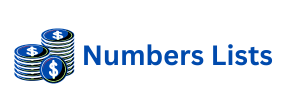Understanding Semantic SEO for Superior Content Writing
Semantic SEO revolutionizes how we create online content. It moves beyond simple keyword matching. Instead, it focuses on user intent and entity relationships. This approach helps search engines truly understand a page’s meaning. For content writers, this means deeper research. We must cover topics comprehensively. We need to answer all possible user questions.
Content writing success now depends on context. A well-written article provides complete value. It addresses the broader subject matter. This improves its relevance for various search queries. Semantic SEO enhances discoverability. It helps content rank for many related keywords. This is more effective than targeting one exact phrase.
Incorporating this mindset changes strategy. We think about the “why” behind searches. We consider the various facets of a topic. This includes related entities and concepts. High-quality content becomes an authority hub. It serves as a go-to resource. This builds trust with both users and search engines. Effective content planning is key here.
Focus on delivering clear value. Every piece of content should be valuable. It must offer insights or solutions. This aligns perfectly with semantic principles. Your words should connect ideas. They should build a comprehensive narrative. This elevates your content above competitors. It ensures lasting organic visibility. Always prioritize the user experience.
Elevating Authority Through Strategic External Backlinks
External backlinks are vital for content authority. They act as votes of confidence. When other reputable sites link to your content, it builds trust. This signals to search engines that your information is valuable. High-quality external links are non-negotiable. They significantly boost your page’s credibility. Earning these links is a strategic process.
Focus on creating truly exceptional content. This naturally attracts external references. Your content should be a definitive source. It needs to offer unique insights or data. Reaching out to relevant sites also helps. Explain the value of your resource. Building relationships is part of this effort. This helps secure valuable links.
The anchor text of an External Backlink matters greatly. It should be natural and descriptive. Avoid keyword stuffing in anchor texts. This practice can harm your SEO. Instead, let the surrounding text provide context. The link should flow seamlessly within the content. This maintains a natural reading experience.
A diverse backlink profile is also beneficial. It shows organic growth. Seek links from various authoritative sources. This includes industry leaders and news sites. Always prioritize quality over quantity. One strong, relevant link is better. It outperforms many low-quality ones. This supports your content’s semantic depth.
Mastering Site Structure with Internal Backlinks
Internal backlinks are just as crucial for content success. They connect pages within your own website. These links help search engine crawlers. They discover new and existing content. Internal linking also passes “link equity.” This means authority spreads across your site. It strengthens your overall domain power.
A well-planned internal linking structure is essential. It guides users through your site. They can easily find related information. This improves user experience metrics. Lower bounce rates are a positive signal. Increased time on site also shows engagement. These factors indirectly boost your search rankings.
Use descriptive and relevant anchor text. The anchor text for an Internal Backlink should accurately describe the destination page. This helps both users and search engines. They understand what to expect. Avoid generic phrases like “click here.” Be specific and clear instead.
Creating content clusters is a powerful strategy. You link related articles together. A main pillar page covers a broad topic. Supporting articles dive into specifics. All these pages link to each other. This creates a strong semantic network. It reinforces your site’s authority on the subject. This improves search engine understanding of your content.
Keyword and Link Relevance for Semantic Optimization
Effective content writing considers keyword relevance. This goes beyond simple exact match keywords. Semantic SEO focuses on entities and related terms. We identify the core topic and its context. What other words naturally appear with this subject? These are important for full understanding.
Long-tail keywords are often more specific. They reflect user intent accurately. Incorporating these phrases improves content depth. It helps you reach niche audiences. Google now understands synonyms and variations. This allows for more natural writing. Avoid forced keyword placements at all costs. Prioritize readability first.
The strategic placement of links is vital. Both internal and external links matter. Their surrounding text adds context. This context helps search engines understand the link’s purpose. Ensure links appear naturally within the prose. They should enhance the user’s journey. Links are not just for SEO; they serve users.
Review existing content regularly. Update it with new relevant keywords. Add new internal links as your site grows. Remove any broken external links. This ongoing maintenance keeps content fresh. It maintains its semantic relevance over time. A healthy link profile signals quality. It indicates a trustworthy resource for users.
Content Guidelines for Semantic Success and Visibility
Semantic SEO content guidelines emphasize user value. Every piece of writing must be helpful. It should be easily digestible for readers. Clear headings and short paragraphs aid readability. This makes complex topics more accessible. Prioritize clarity and conciseness in every sentence.
Ensure your content answers key questions. Think about the “who, what, when, where, why, and how.” Addressing these fully creates comprehensive resources. This aligns with semantic search principles. It meets the varied needs of your target audience. Always put the user first in your content creation.
Authority and trust are built over time. Consistently publish high-quality, relevant content. Earn natural external backlinks from reputable sources. Maintain a robust internal linking structure. These efforts collectively boost your online presence. They establish you as a leader in your field.
Monitoring performance is also crucial. Track how your content ranks. Analyze user engagement metrics. Use this data to refine your strategy. Content writing is an iterative process. Continuously optimize for semantic understanding. This ensures long-term visibility and success. Always seek to improve your content’s value.
